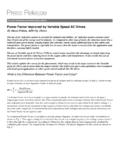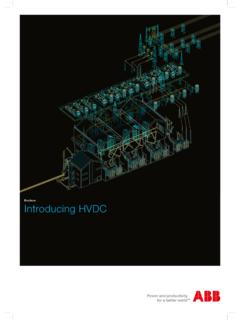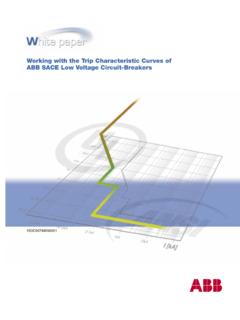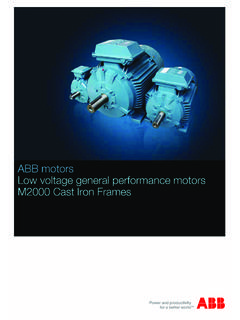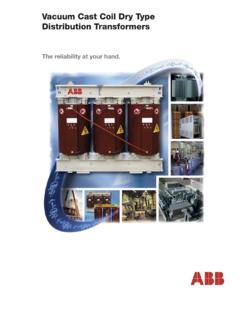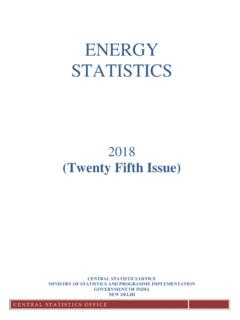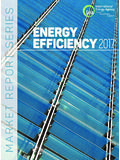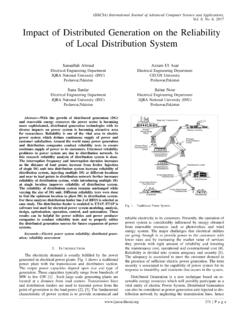Transcription of Technical Application Papers No.10 Photovoltaic …
1 Technical Application Papers plants1 IndexTechnical Application PapersIntroduction .. 4 PART I1 Generalities on Photovoltaic (PV) plants .. 5 Operating principle .. 5 energy from the Sun .. 5 Main components of a Photovoltaic plant .. 8 Photovoltaic generator ..8 Typologies of Photovoltaic panels .. 12 Crystal silicon panels ..12 Thin film panels ..13 Typologies of Photovoltaic 15 Stand-alone plants ..15 Grid-connected plants ..16 Intermittence of generation and storage of the produced power .. 172 energy production .. 18 Circuit equivalent to the cell .. 18 Voltage-current characteristic of the cell .. 18 Grid connection scheme .. 19 Nominal peak power .. 20 Expected energy production per year .. 20 Inclination and orientation of the panels .. 22 Voltages and currents in a PV plant .. 24 Variation in the produced energy .
2 24 Irradiance ..24 Temperatures of the modules ..25 Shading ..253 Installation methods and configurations .. Architectural integration .. Solar field layout .. 27 Single-inverter plant ..27 Plant with one inverter for each string ..27 Multi-inverter plant .. Inverter selection and interfacing .. Choice of cables .. 32 Types of cables ..32 Cross sectional area and current carrying II Italian context4 Connection to the grid and measure of the energy .. General .. In parallel with the LV network .. In parallel with the MV network .. Measurement of the energy produced and ex-changed with the grid .. 385 Earthing and protection against indirect contact .. Earthing .. Plants with transformer .. 39 Exposed conductive parts on the load side of the transformer ..39 Plant with IT system.
3 39 Plant with TN system ..39 Exposed conductive parts on the supply side of the transformer ..40 Photovoltaic plantsFollows2 IndexTechnical Application PapersPhotovoltaic Plants without transformer .. 416 Protection against over-cur-rents and overvoltages .. Protection against over-currents on DC side .. 42 Cable protection ..42 Protection of the strings against reverse current ..43 Behaviour of the inverter ..43 Choice of the protective devices .. Protection against overcurrents on AC side .. Choice of the switching and disconnecting devices .. Protection against overvoltages .. 45 Direct lightning ..45 Building without LPS ..45 Building with LPS ..45 PV plant on the ground ..46 Indirect lightning ..46 Protection on DC side ..47 Protection on AC side ..487 Feed-in Tariff .. Feed-in Tariff system and incentive tariffs.
4 Valorization of the power produced by the installation .. 50 Net Metering ..50 Sale of the energy produced ..508 Economic analysis of the investment .. Theoretical notes .. 51 Net Present Value (NPV) ..51 Economic indicators ..51 Internal Rate of Return (IIR) ..51 Discounted Payback ..51 Simple Payback .. Economic considerations on PV installations .. Examples of investment analysis .. 52 Self-financed 3kWp Photovoltaic plant ..52 Financed 3kWp Photovoltaic plant ..54 Self-financed 60kWp Photovoltaic plant ..55 Financed 60kWp Photovoltaic plant ..56 PART III9 ABB solutions for photo-voltaic applications .. Molded-case and air circuit-breakers .. 57 Tmax T molded-case circuit-breakers for alternating current New range of molded-case circuit-breakers SACE Tmax XT ..58 Molded-case circuit-breakers for applications up to 1150 V AC.
5 59 Molded-case switch-disconnectors type Tmax T and SACE Tmax XT ..62 Air circuit-breakers for alternating current applications ..63 Air circuit-breakers for applications up to 1150V AC ..64 Air switch-disconnectors ..65 Air switch-disconnectors for applications up to 1150V AC ..66 Tmax T molded-case circuit-breakers for direct current SACE Tmax XT molded-case circuit-breakers for direct current applications ..68 Molded-case circuit-breakers for applications up to 1000V DC ..68 Molded-case switch-disconnectors for direct current applications ..69 Tmax PV air circuit-breakers for direct current applications ..70 Air switch-disconnectors for applications up to1000V DC .. Residual current releases Type B .. 75 Residual current releases RC223 and RC Type B ..75 Residual current devices .. Contactors.
6 Switch-disconnectors .. Miniature circuit-breakers .. Surge protective devices, Type 2 .. Fuse disconnectors and fuse holders .. Electronic energy meters .. Switchboards .. Wall-mounted consumer units .. Junction boxes .. Terminal blocks .. Motors .. Frequency converters .. Programmable Logic Sub-switchboards .. 81 Annex A New panel Emerging technologies .. Concentrated photovoltaics .. Photovoltaics with cylindrical panels .. 84 Annex B Other renewable energy Introduction .. Wind power .. Biomass energy source .. Geothermal power .. Tidal power and wave motion .. Mini-hydroelectric power .. Solar thermal power .. Solar thermodynamic power .. Hybrid systems .. energy situation in Italy .. 91 Non renewable energies .. 92 Renewable energies .. 92 Annex C Dimensioning examples of Photovoltaic Introduction.
7 3kWp PV plant .. 60kWp PV plant .. 96 4 Technical Application PapersPhotovoltaic plantsIntroductionIntroductionIn the present global energy and environmental context, the aim of reducing the emissions of greenhouse gases and polluting substances (also further to the Kyoto proto-col), also by exploiting alternative and renewable energy sources which are put side by side to and reduce the use of fossil fuels, doomed to run out due to the great consumption of them in several countries, has become of primary importance. The Sun is certainly a renewable energy source with great potential and it is possible to turn to it in the full respect of the environment. It is sufficient to think that instant by instant the surface of the terrestrial hemisphere exposed to the Sun gets a power exceeding 50 thousand TW; therefore the quantity of solar energy which reaches the terrestrial soil is enormous, about 10 thousand times the energy used all over the world.
8 Among the different systems using renewable energy sources, photovoltaics is promising due to the intrinsic qualities of the system itself: it has very reduced service costs (the fuel is free of charge) and limited maintenance requirements, it is reliable, noiseless and quite easy to install. Moreover, photovoltaics, in some stand-alone applications , is definitely convenient in comparison with other energy sources, especially in those places which are difficult and uneconomic to reach with traditional electric lines. In the Italian scenario, photovoltaics is strongly increasing thanks to the Feed-in Tariff policy, that is a mechanism to finance the PV sector, providing the remuneration, through incentives granted by the GSE (Electrical Utilities Administrator), of the electric power produced by plants connected to the grid. This Technical paper is aimed at analyzing the problems and the basic concepts faced when realizing a photo-voltaic plant; starting from a general description regard-ing the modalities of exploiting solar energy through PV plants, a short description is given of the methods of connection to the grid, of protection against overcurrents, overvoltages and indirect contact, so as to guide to the proper selection of the operating and protection devices for the different components of plants.
9 This Technical paper is divided into three parts: the first part, which is more general and includes the first three chapters, describes the operating principle of PV plants, their typology, the main components, the installation methods and the different configurations. Besides, it offers an analysis of the production of energy in a plant and illustrates how it varies as a function of determined quantities. The second part (including the chapters from four to eight) deals with the methods of connection to the grid, with the protection systems, with the description of the Feed-in Tariff system and with a simple economical analysis of the investment necessary to erect a PV plant, making particular reference to the Italian context and to the Standards, to the resolutions and the decrees in force at the moment of the drawing up of this Technical paper . Finally, in the third part (which includes Chapter 9) the solutions offered by ABB for Photovoltaic applications are complete this Technical paper , there are three an-nexes offering: a description of the new technologies for the realization of solar panels and for solar concentration as a method to increase the solar radiation on panels; a description of the other renewable energy sources and an analysis of the Italian situation as regards en-ergy; an example for the dimensioning of a 3kWp PV plant for detached house and of a 60kWp plant for an artisan manufacturing plants 1 Generalities on Photovoltaic (PV) plants1 Generalities on Photovoltaic (PV) plants PART Operating principleA Photovoltaic (PV) plant transforms directly and instan-taneously solar energy into electrical energy without us-ing any fuels.
10 As a matter of fact, the Photovoltaic (PV) technology exploits the photoelectric effect, through which some semiconductors suitably doped generate electricity when exposed to solar main advantages of Photovoltaic (PV) plants can be summarized as follows: distribuited generation where needed; no emission of polluting materials; saving of fossil fuels; reliability of the plants since they do not have moving parts (useful life usually over 20 years); reduced operating and maintenance costs; system modularity (to increase the plant power it is sufficient to raise the number of panels) according to the real requirements of , the initial cost for the development of a PV plant is quite high due to a market which has not reached its full maturity from a Technical and economical point of view. Moreover the generation of power is erratic due to the variability of the solar energy source.
